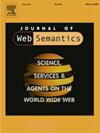Education in the era of Neurosymbolic AI
IF 3.1
3区 计算机科学
Q3 COMPUTER SCIENCE, ARTIFICIAL INTELLIGENCE
引用次数: 0
Abstract
Education is poised for a transformative shift with the advent of neurosymbolic artificial intelligence (NAI), which will redefine how we support deeply adaptive and personalized learning experiences. The integration of Knowledge Graphs (KGs) with Large Language Models (LLMs), a significant and popular form of NAI, presents a promising avenue for advancing personalized instruction via neurosymbolic educational agents. By leveraging structured knowledge, these agents can provide individualized learning experiences that align with specific learner preferences and desired learning paths, while also mitigating biases inherent in traditional AI systems. NAI-powered education systems will be capable of interpreting complex human concepts and contexts while employing advanced problem-solving strategies, all grounded in established pedagogical frameworks. In this paper, we propose a system that leverages the unique affordances of KGs, LLMs, and pedagogical agents – embodied characters designed to enhance learning – as critical components of a hybrid NAI architecture. We discuss the rationale for our system design and the preliminary findings of our work. We conclude that education in the era of NAI will make learning more accessible, equitable, and aligned with real-world skills. This is an era that will explore a new depth of understanding in educational tools.
神经符号人工智能时代的教育
随着神经符号人工智能(NAI)的出现,教育即将发生革命性的转变,这将重新定义我们如何支持深度适应和个性化的学习体验。知识图(KGs)与大型语言模型(llm)的集成是一种重要而流行的NAI形式,它为通过神经符号教育代理推进个性化教学提供了一条有前途的途径。通过利用结构化知识,这些智能体可以提供个性化的学习体验,与特定的学习者偏好和期望的学习路径保持一致,同时还可以减轻传统人工智能系统固有的偏见。ai驱动的教育系统将能够解释复杂的人类概念和背景,同时采用先进的解决问题的策略,所有这些都以既定的教学框架为基础。在本文中,我们提出了一个系统,该系统利用了KGs, llm和教学代理(旨在增强学习的具体化字符)的独特功能,作为混合NAI架构的关键组件。我们讨论了我们系统设计的基本原理和我们工作的初步发现。我们的结论是,人工智能时代的教育将使学习更容易获得、更公平,并与现实世界的技能保持一致。这是一个将在教育工具中探索新的理解深度的时代。
本文章由计算机程序翻译,如有差异,请以英文原文为准。
求助全文
约1分钟内获得全文
求助全文
来源期刊

Journal of Web Semantics
工程技术-计算机:人工智能
CiteScore
6.20
自引率
12.00%
发文量
22
审稿时长
14.6 weeks
期刊介绍:
The Journal of Web Semantics is an interdisciplinary journal based on research and applications of various subject areas that contribute to the development of a knowledge-intensive and intelligent service Web. These areas include: knowledge technologies, ontology, agents, databases and the semantic grid, obviously disciplines like information retrieval, language technology, human-computer interaction and knowledge discovery are of major relevance as well. All aspects of the Semantic Web development are covered. The publication of large-scale experiments and their analysis is also encouraged to clearly illustrate scenarios and methods that introduce semantics into existing Web interfaces, contents and services. The journal emphasizes the publication of papers that combine theories, methods and experiments from different subject areas in order to deliver innovative semantic methods and applications.
 求助内容:
求助内容: 应助结果提醒方式:
应助结果提醒方式:


